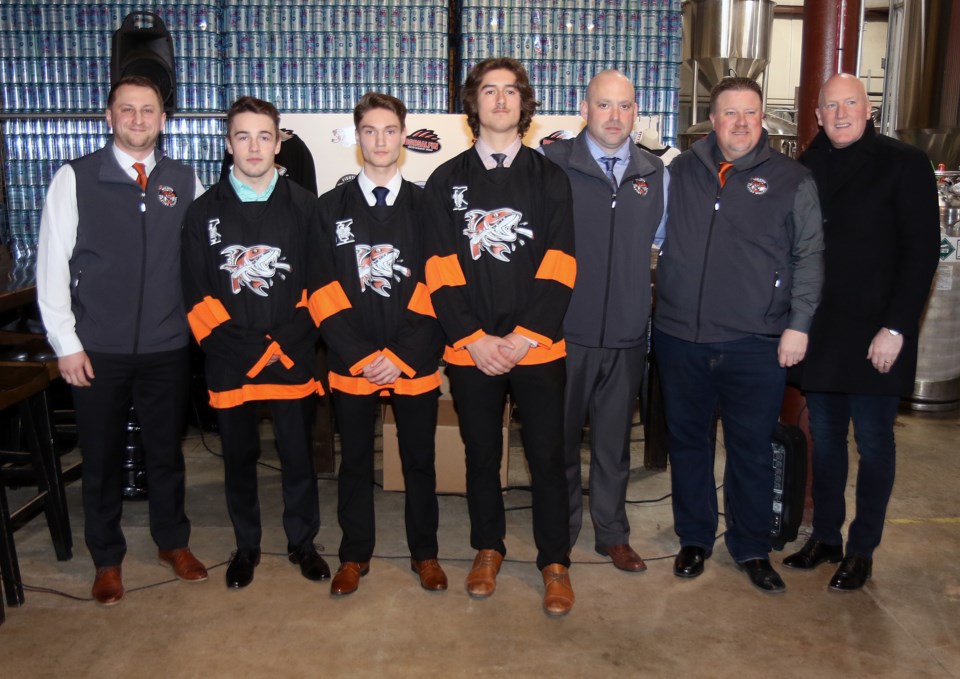THUNDER BAY – When Greg Johnson landed in the National Hockey League in 1993, he kicked off a golden era for the game in his hometown of Thunder Bay.
Soon to follow him to the big leagues were the likes of Alex Auld and Taylor Pyatt and his brother Ryan, followed in no short order by Patrick Sharp and the brothers Staal, Tom Pyatt, Robert Bortuzzo and Carter Hutton.
But lately, with the exception of Pittsburgh Penguins two-time Stanley Cup-winning goaltender and New Jersey netminder Mackenzie Blackwood, the pipeline appears to have dried up.
Sure, a few players make their way to major junior, but in recent years, that's really as far as they go. Some might get a sniff at the lower minor leagues, but there aren't many full-fledged prospects being developed in a city that boasts one of the highest NHL counts in the country.
Last year, there was a lot of chatter about Thunder Bay North Stars forward Keighan Gerrie, who was paid visits by several NHL scouts.
Ultimately he wasn't drafted and has just four goals in 42 games with the United States Hockey League's Waterloo Blackhawks.
Michael Power wants to turn Thunder Bay's hockey fortunes around.
The president of the Thunder Bay Kings and a former NHL draft pick in his own right, taken 143rd overall in 1990 by the Edmonton Oilers, Power and the Kings board of directors have forged a partnership with the expansion Kam River Fighting Walleye of the Superior International Junior Hockey League.
The goal is to keep the best 16- and 17-year-olds playing top tier midget hockey and out of Junior A, reserving the junior ranks for 18- to 20-year-olds.
“The Kings organization was thriving. It was winning Air Canada Cups ... and at the same time the (Thunder Bay) Flyers organization, as a Junior A winner, was winning Anderson Cups, Clark Cups and Centennial Cups,” Power said.
“One of the key reasons hockey fans will recognize is the relationship between the midget organization and the junior organization was very strong. It was a very formal relationship. It was one where the junior organization would encourage the best 16- and 17-year-olds to stay in midget hockey, play U18 hockey, get stronger, get bigger, develop.
“You could see the fruits of that labour. The best players were graduating at 18, moving into the Flyers organization and winning on the national scale. We've gotten away from that in Thunder Bay and what's been happening by and large in Thunder Bay, certainly when Thunder Bay had more than one SIJHL team, is we were finding most of the best 16- and 17-year-olds leaving midget hockey and trying to compete against 20-year-olds.”
Power said often that mean their careers were compromised and thwarted.
“Yes, the Robert Bortuzzos did well, but many of them didn't. What today signals is a strong rejuvenation of a working relationship between junior hockey, a team, the Kam River Fighting Walleye that wants to win the Centennial Cup ... and they're committed to winning with 18-, 19- and 20-year-olds,” Power said.
The agreement essentially creates a synergy between the two organizations, the younger players getting a chance to learn the Fighting Walleye way as they come up through the ranks. But it's more than that. The Walleye have agreed to donate the 50-50 proceeds to the Kings program, allowing the team to provide spots for several talented players who otherwise might not be able to afford the five-figure cost to play competitive AAA midget hockey.
It's a win-win for both organizations, said Fighting Walleye general manager Kevin McCallum.
“I think if you look at all the national champions in the last 25 to 30 years, those rosters are built with 18-, 19- and 20-year-olds. We have 15 scouts working all over North America right now to find the best 18-, 19- and 20-year-olds. There will be that special circumstance if an OHL team wants one of their draft picks playing Junior A hockey and he wants to be home, he'll play for us.
“But to fill our roster with 16- and 17-year-olds, to be honest, that's me not doing my job and our scouts not doing their job.”
What the agreement won't do is lock Kings players into playing for the Walleye if they want to play Junior A. They'll still be allowed to sign with the team of their choosing, including Kam River's cross-town rival, the Thunder Bay North Stars.
The hope, however, is that by being integrated into the Walleye system from an early age, that's the team they'll choose.
"The North Stars and Walleye will still have access to the Kings players," said SIJHL commissioner Bryan Graham. "This is more of a business partnership. But they do have a lot of incentives, potentially for the players in the Kings program. Nevertheless, it's still going to come down to the players and the parents deciding which is the best route."
The Kam River Fighting Walleye begin their inaugural SIJHL season in September.
